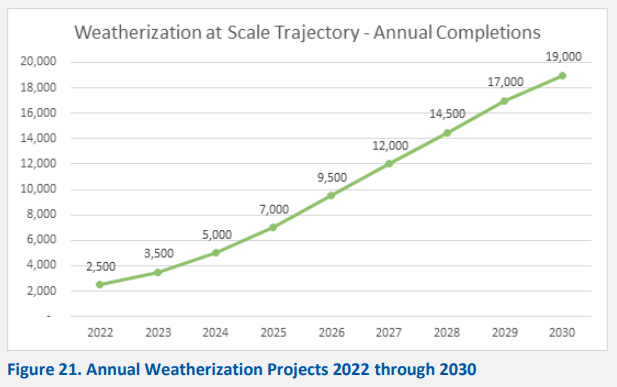Myth: Weatherization can prevent load growth
Reality: Weatherization can help to slow the rate at which at load grows but cannot halt load growth
Weatherization is a valuable climate mitigation tool but will not prevent load growth in Vermont. Modeling conducted for the Vermont Climate Council and reported in the Vermont Pathways Analysis Report 2.0 includes the cumulative weatherization of 120,000 Vermont homes by 2030 and projects that load will grow dramatically over this same timeframe. To achieve this ambitious weatherization goal, the number of weatherization projects completed annually will have to increase from approximately 2,000 today to 19,000 projects a year by 2030.

Even if Vermont is able to achieve this weatherization target, electricity demand is still projected to grow by 44% by 2030 (from 5.5 TWh in 2020 to 7.9 TWh in 2030) to support demand for heat pumps, electric vehicles, and other electrification measures.
It is worth noting that the Pathways Analysis Report found that heat pumps provided the single greatest contribution to reducing emissions from Vermont buildings. The Report calculated that 50% of the 2030 building emissions reductions would be attributable to heat pumps while weatherization, electric water heaters, induction stoves, and other fuel switching driven by a Clean Heat Standard would account for the other 50% of emissions reductions. Weatherization is not a substitute for electrification but a complementary strategy to electrification. In the context of the Vermont Climate Action Plan, weatherization can help to slow the rate at which load grows but will not reduce load.
